This post contains affiliate links.
Sophie and Henry felt strongly about living sustainably, and building an eco-friendly DIY tiny home — while living a minimalist lifestyle — fit perfectly into that passion.
Their combined experience in architecture and framing made them perfect candidates for building their own home, although it did take them longer than they had thought (a common theme in most DIY projects, I find!). They (@RADtinyhome) had to uproot their lives and move away from the Twin Cities to a more rural area to find parking, but the side effect of that is more time in and connectedness to nature.
Even if you can’t go tiny right now, there are ways to embrace low-waste living, which they outline in this simple guide here. You can read our Q&A with the couple at the end of the post after checking out their awesome tour below! They even did a breakdown of costs to build their tiny, and made a nice pie chart graph to help you visualize it…
Don’t miss other interesting tiny homes like this one – join our FREE Tiny House Newsletter for more!
Going Tiny to Embrace Low-Waste Living
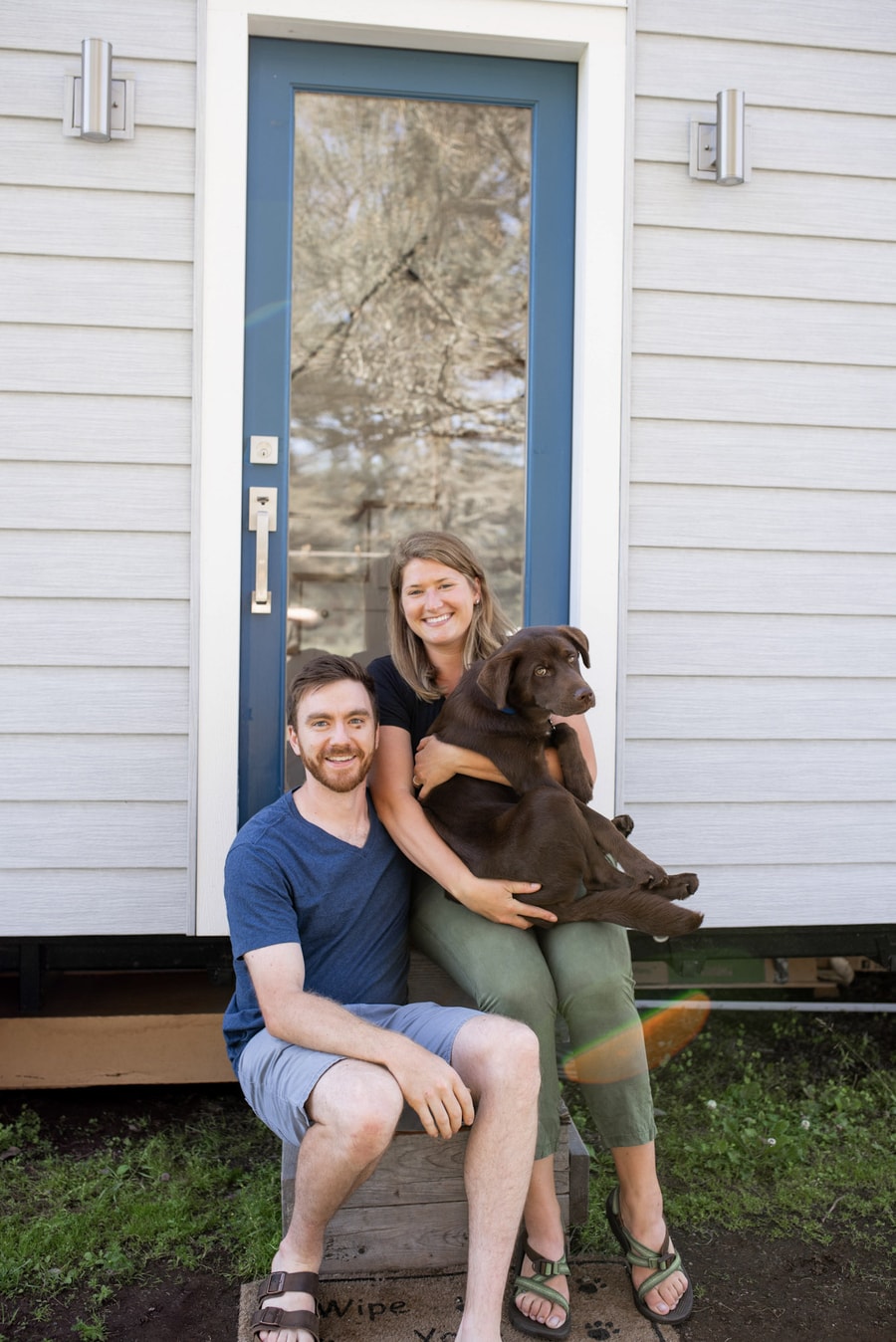
Images via @sydney.carlino/Instagram
That 3 ft. portal window gives the living room a special feel

Images via @sydney.carlino/Instagram
I’m all about a mini stove! And look at all that natural light.
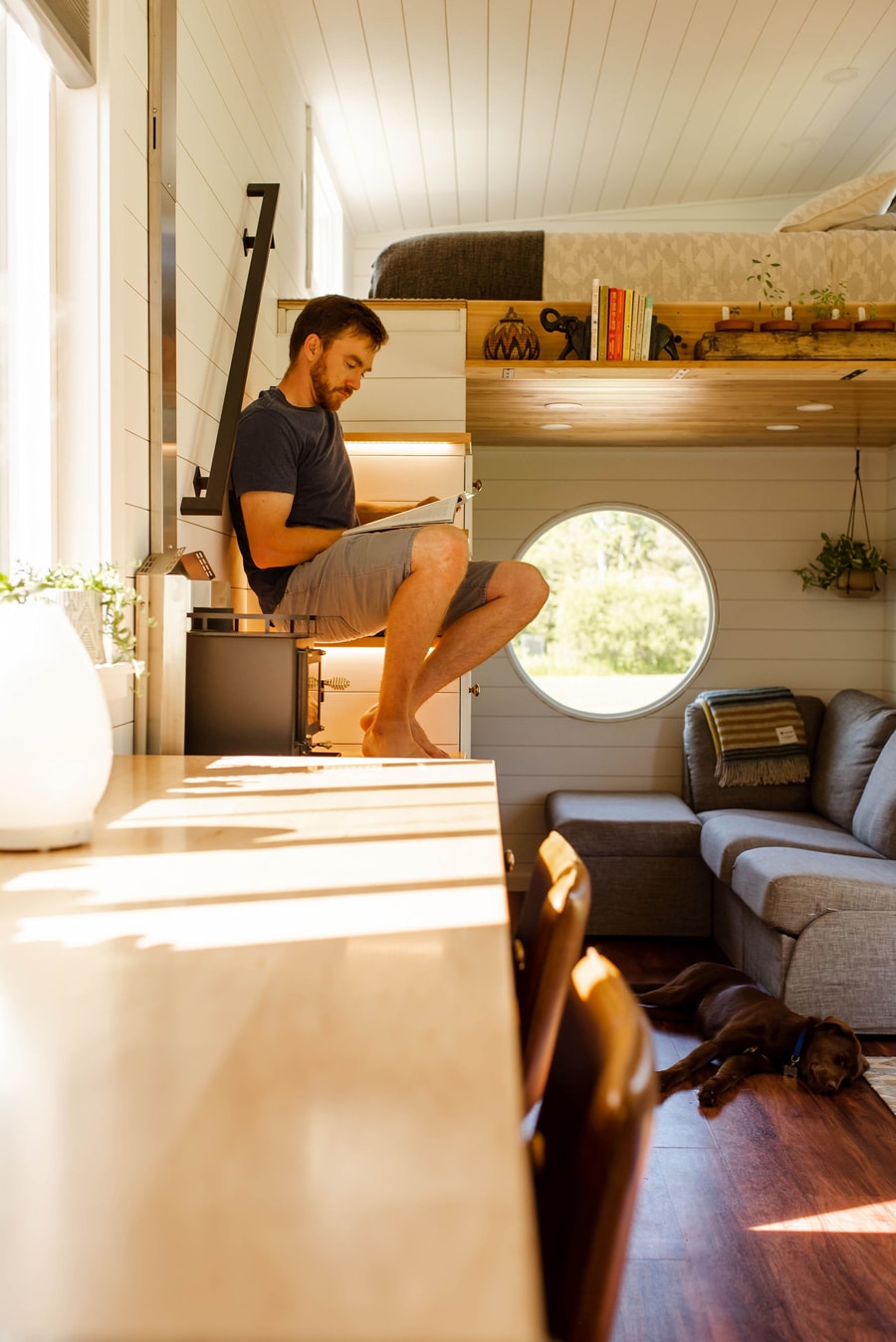
Images via @sydney.carlino/Instagram
Cooking from scratch is a great way to reduce waste.
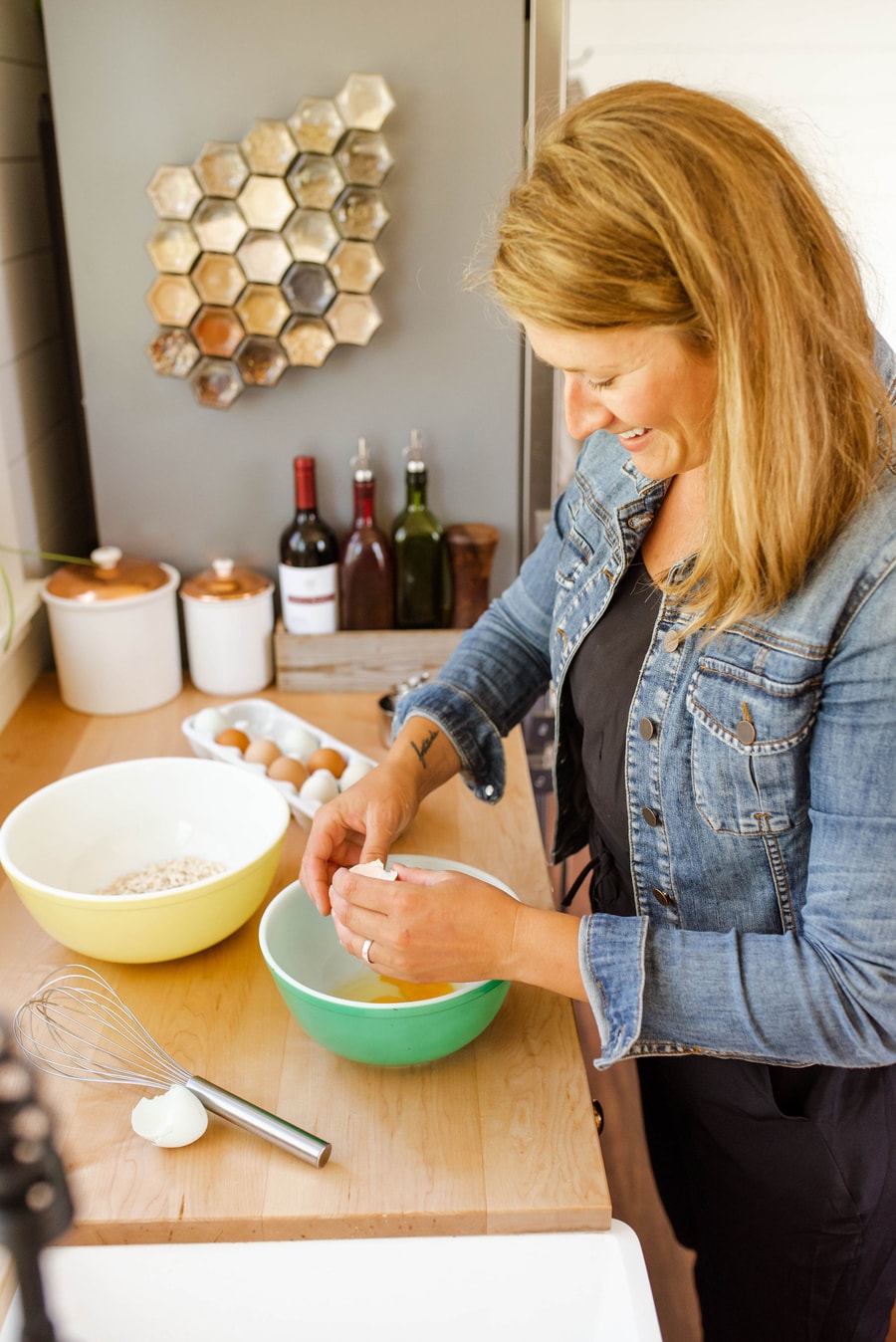
Images via @sydney.carlino/Instagram
Love the storage underneath!
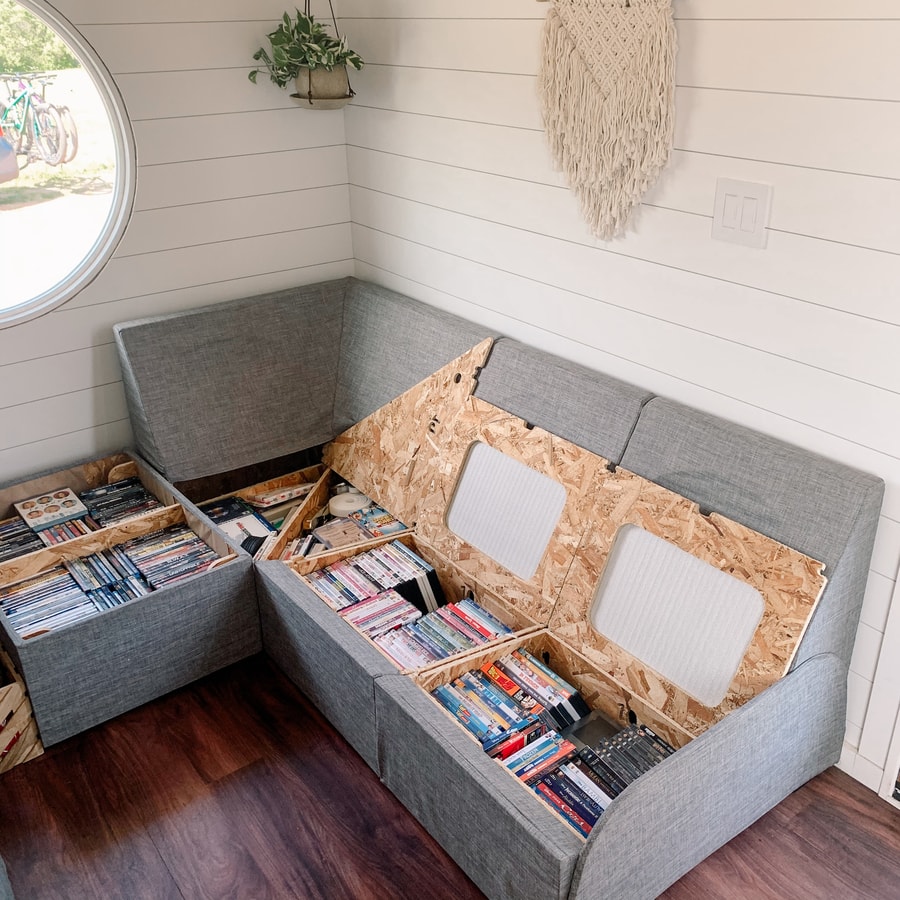
Images via @radtinyhome/Instagram
Those glass jars are my dream.
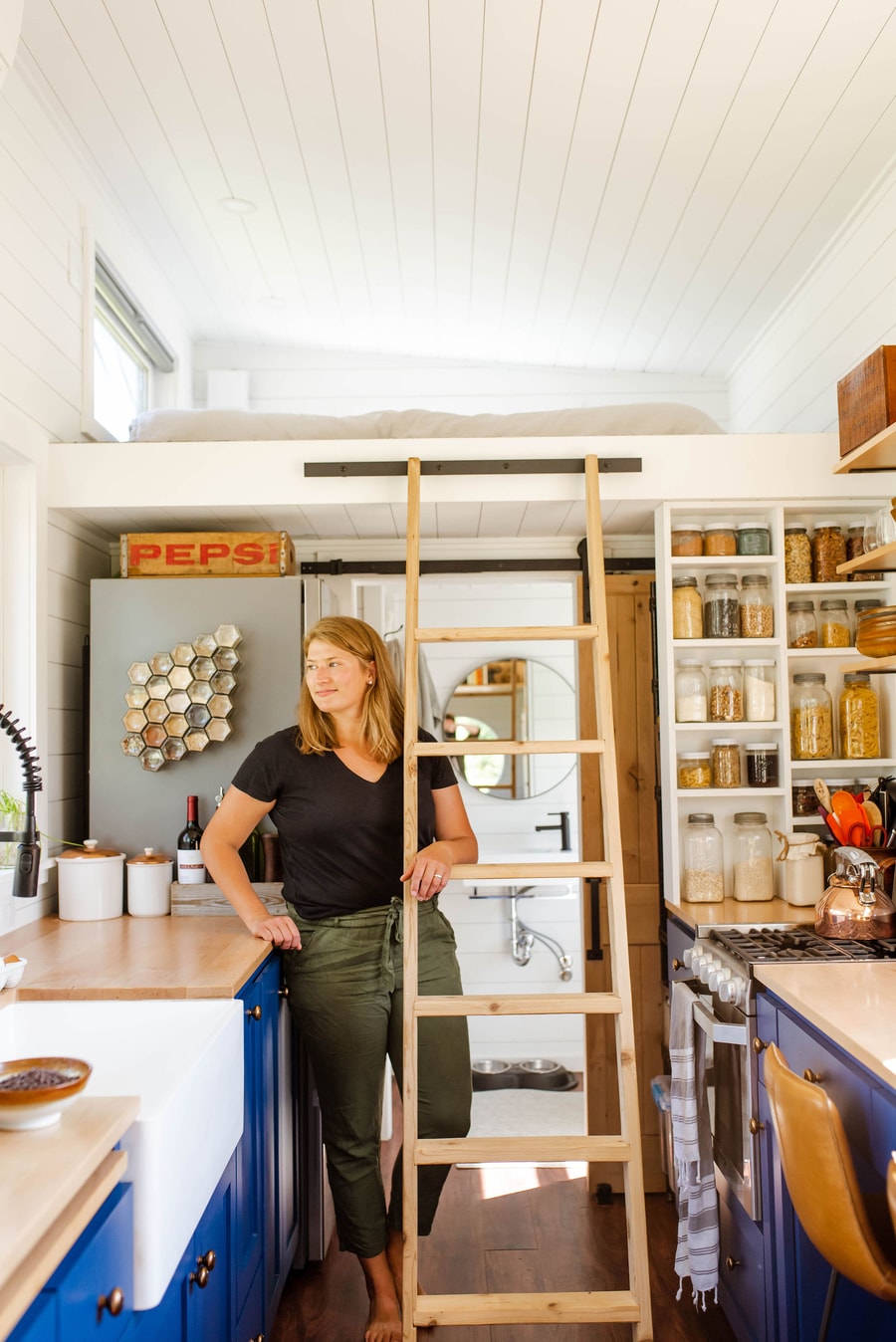
Images via @sydney.carlino/Instagram
Buying in bulk helps reduce packaging waste.

Images via @sydney.carlino/Instagram
Wow! Those plates are amazing.

Images via @radtinyhome/Instagram
Their tiny has a lot of counter space for being so small.
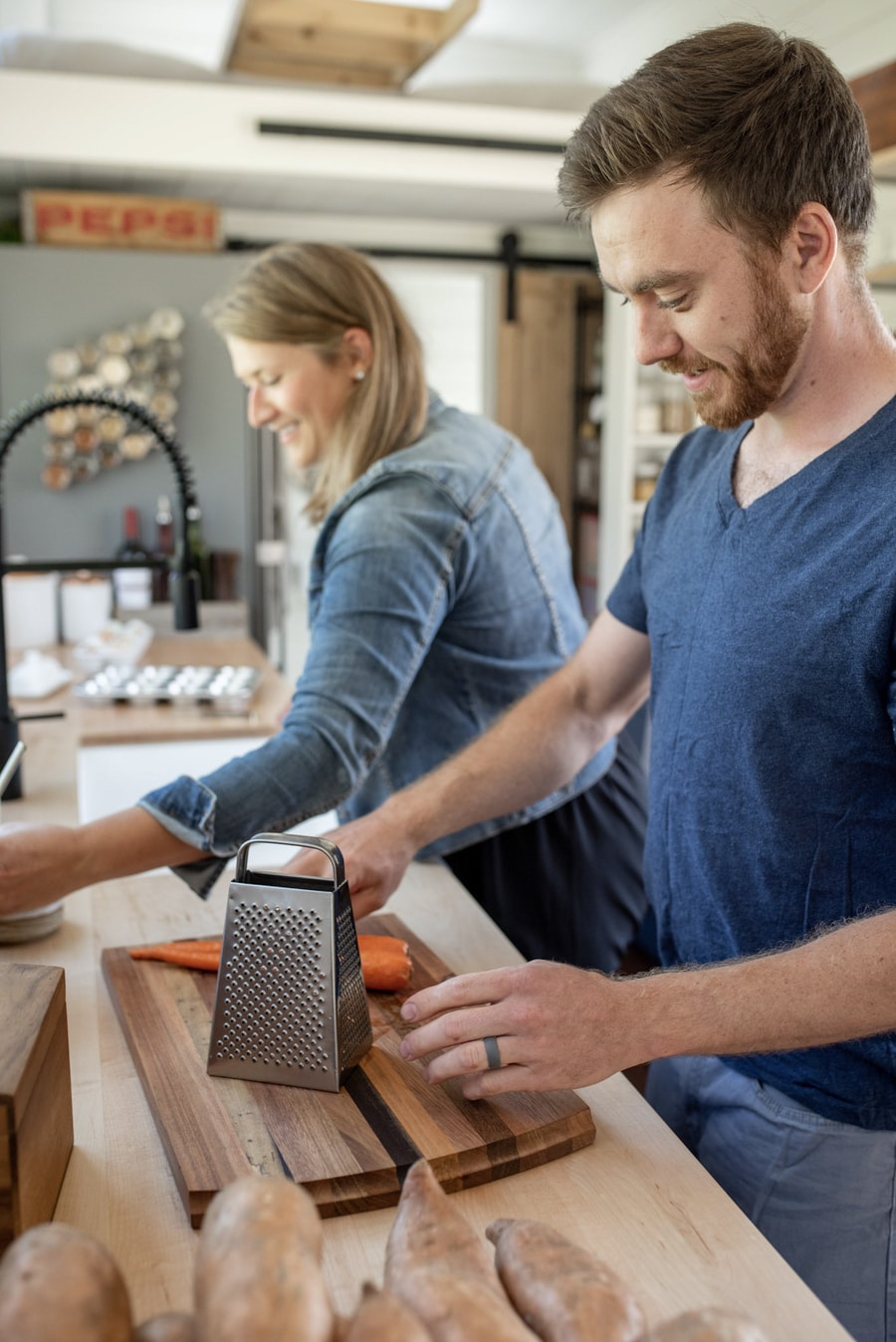
Images via @sydney.carlino/Instagram
What a pretty bathroom!
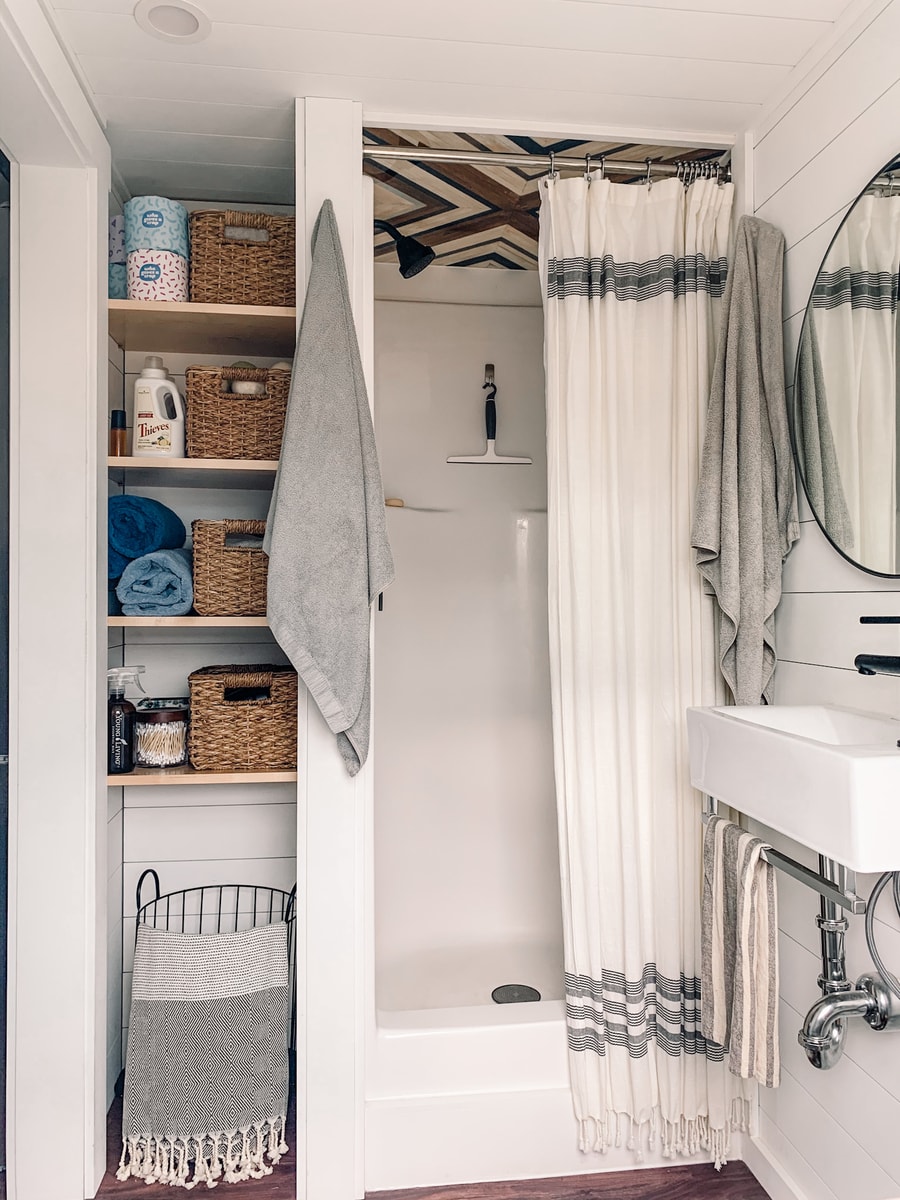
Images via @radtinyhome/Instagram
The little black sign 😂
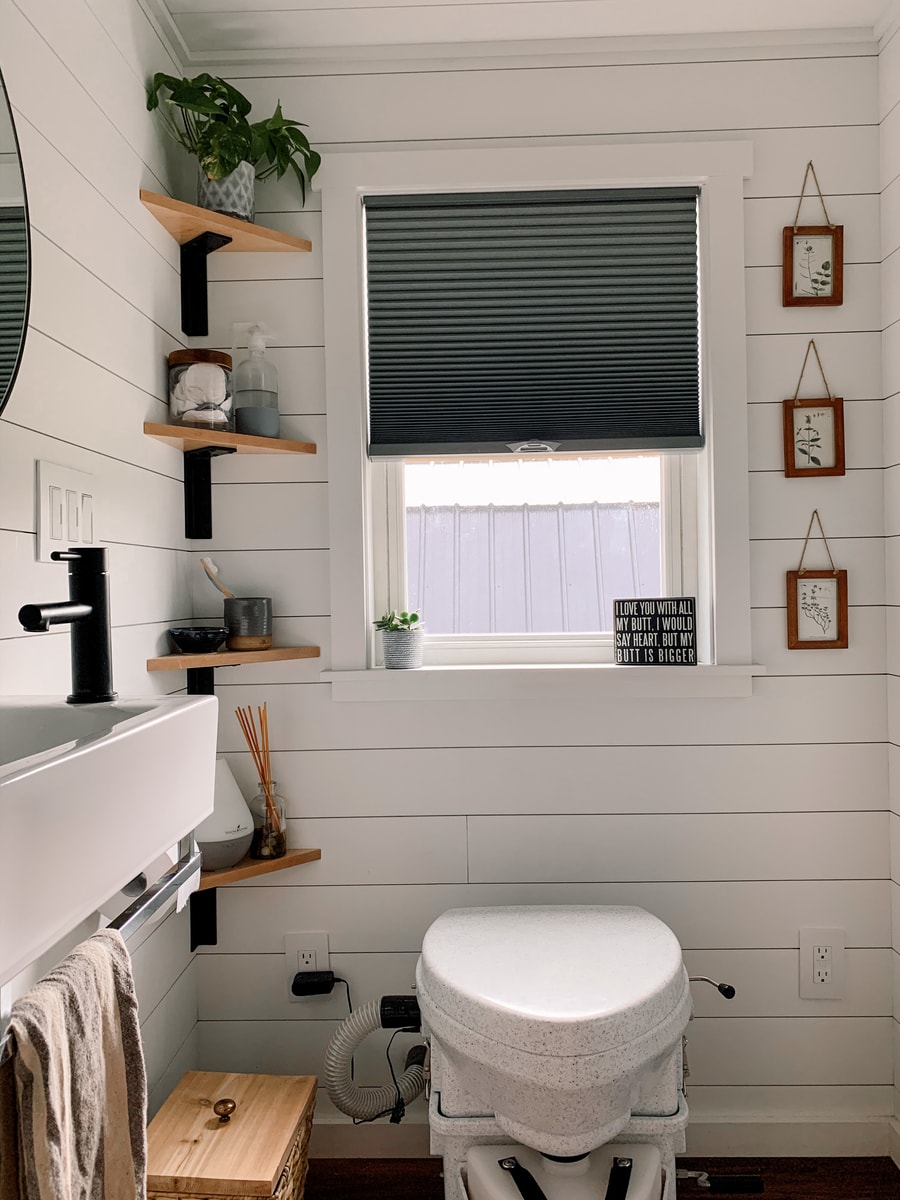
Images via @radtinyhome/Instagram
The wall in their living room. Love that ceiling.

Images via @radtinyhome/Instagram
Here’s their light and bright loft.
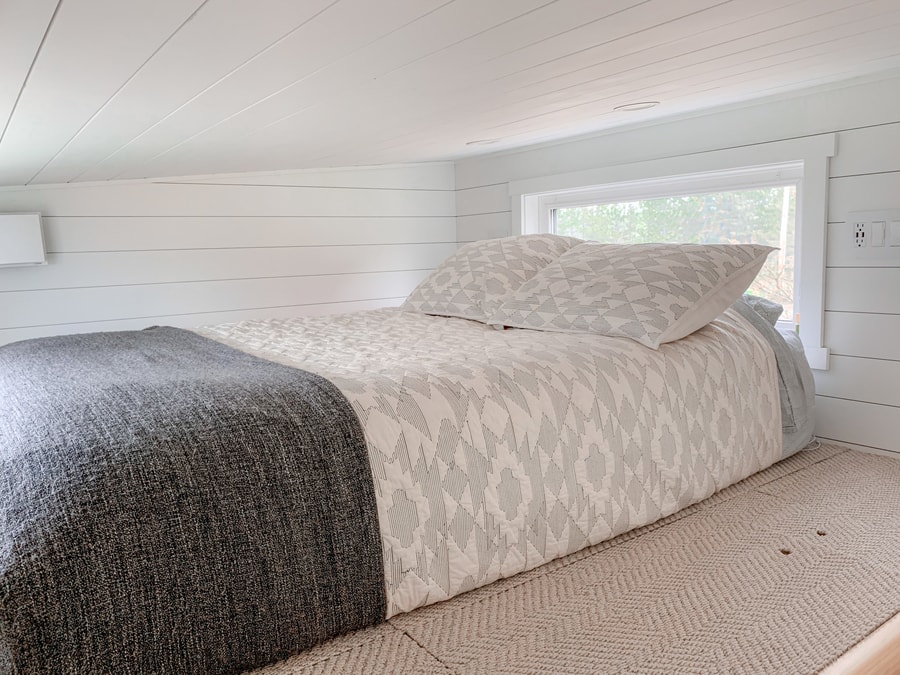
Images via @radtinyhome/Instagram
Tiny homes with plants are the best!
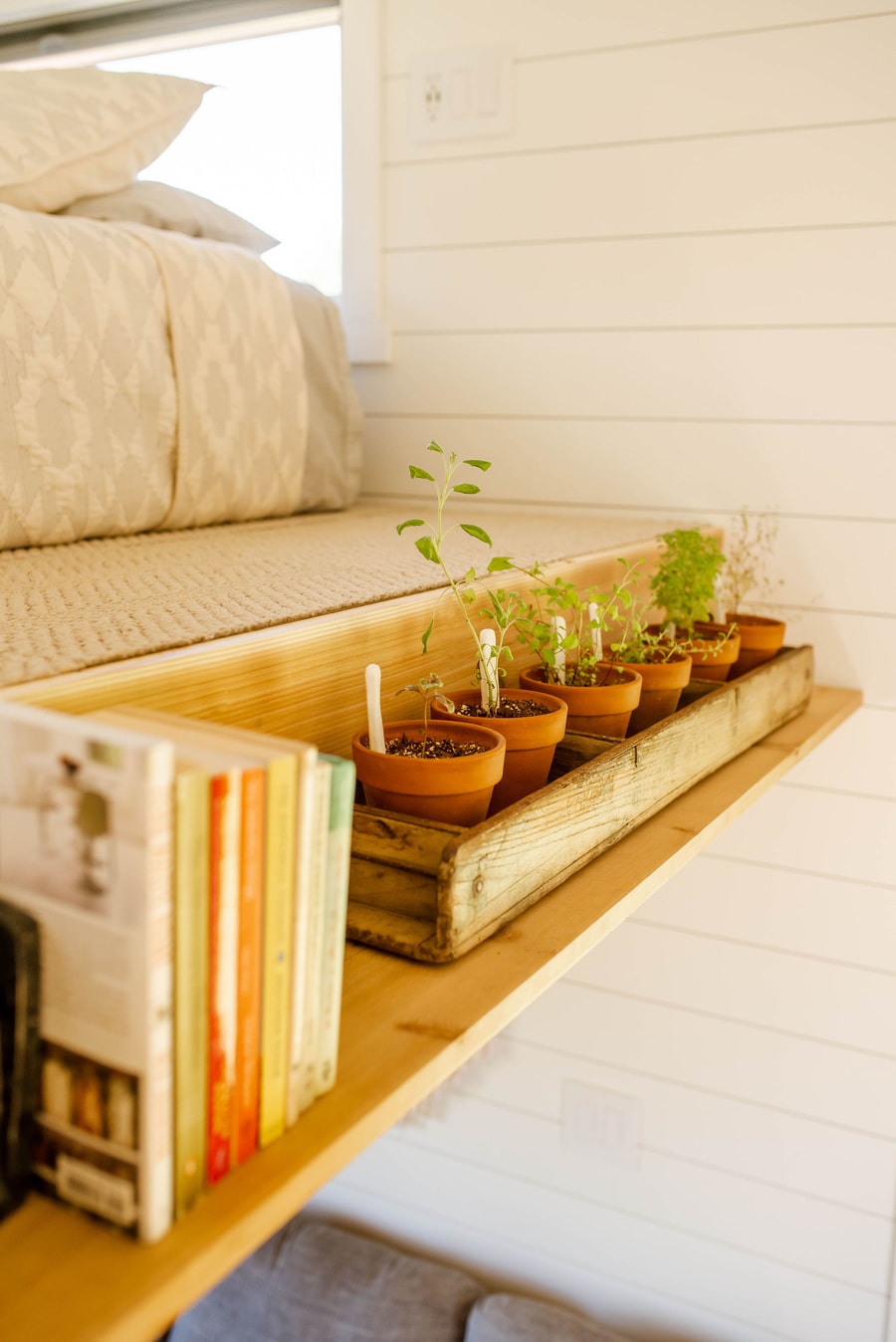
Images via @sydney.carlino/Instagram
Interview with Sophie: Rethinking the American Dream
What are your name(s)?
Henry & Sophie Jungbauer
How many people (and animals) are living in your home?
2 adults and one Labsky Pup, Cora
Where do you live? How long have you lived tiny?
We are currently parked near Duluth, in northern Minnesota on private property. We moved the tiny house to our current spot after completing the build in August 2019 and have been living tiny for over a year now.
What do you do for work? Or do you travel full-time?
Sophie works in the architecture world, Henry does residential construction sales. Before we embarked on our build Henry worked on a crew as a residential framer and Sophie was working in a small commercial architecture firm as a drafter.
Why did you decide to go tiny? What are you hoping to get out of living tiny?
Our goal in going tiny was to lead a more sustainable lifestyle and live more intentionally while sharing our journey along the way. The ethos of the tiny house movement and a strong connection to sustainability is what drew us to live tiny. The movement was pioneered by individuals building their own homes, some with no prior building experience whatsoever. It was very empowering for us to see others successfully complete their builds and honestly, we never gave much thought to not build it ourselves.
After graduating from Luther College, I did a 2-year technical program in architecture technology and started working in the field of commercial architecture. Henry worked as a framer for a high-end custom home builder. We figured with our combined skill sets there was no reason that we wouldn’t be able to build our own. One of the unique things about tiny houses is the opportunity to design a space specifically for how you live. We knew that we wanted to build our own home so that we would have control over the design and materials used, have a real sense of ownership of the home, and save on labor costs by constructing the house ourselves.
How did you first learn about tiny life?
During my senior year at Luther College, Dee Williams came to talk to my senior capstone sustainability course about her experience. She also hosted a talk later that evening on campus which I attended and subsequently purchased her memoir “The Big Tiny” that evening. I also took a course called “Consumption and its Consequences” that challenged my perspective about what is truly needed in life to be happy and also opened my eyes to the negative environmental impacts that a typical American’s consumption habits can have. I chose to write my senior paper on the Tiny House movement and titled it, “Rethinking the American Dream: Downsizing as a Sustainable Solution”, which is where we got the idea for our Instagram handle “@RADtinyhome”
How did you acquire your tiny house? Are you comfortable sharing how much it cost?
We built our tiny from the trailer up. With a background in architecture I was able to draft framing plans and create a 3D model. Prior to our build we watched a lot of tiny house shows on YouTube and incorporated features from our favorite homes into our design. We picked up our trailer in April of 2018 but the build didn’t really get underway until the fall of 2018. We often joke that the build will never truly be complete.
Since moving in we’ve wrapped up lots of storage projects and still have a few aesthetic projects to complete. The overall cost of our build was approximately $50k (USD). We did hire some professionals to help us with the electric and plumbing, so we generally exclude their labor costs from the overall budget. We saved tons of money on purchasing our windows and doors on Craigslist but splurged on some nicer finishes. It might be surprising to some but our trailer was the single most expensive item for the build.
We went with the Healthy Home Kit from Isabelle Nagel-Brice (@atinygoodtiny) that provided us with some of the highest quality building products in the market (interior and exterior building wrap, mineral wool insulation, and an HRV system) which was not something we had necessarily budgeted for, but are so happy we incorporated into our build. We rarely paid full price for anything and waited to purchase things (like appliances) when they were on sale.

What are bills/utilities like compared to before?
Monthly, we spend less than half of what we were paying in rent for a one-bedroom apartment in the Twin Cities. Our oven/range and on-demand water heater run off of propane, we go through a 30lb tank about once every two months. Our mini-split that heats and cools our home is very energy efficient and we installed LED lights throughout the house. In the summer when windows suffice and the AC is not on we’ve spent as little as $8 a month on electric. In the winter months we hook up a heated hose for water and our electric bills typically range from $70-90/month.
How did you find a place to “park” your home? Or do you travel?
We are located in a rural area that has hosted tiny houses in the past. When we started looking for a place to park our house we knew that the regulations for parking tiny houses around the Twin Cities would make it near impossible to find a viable option without terrible commutes so we started looking elsewhere. We thought about other areas we’d like to live and Duluth came to mind. It is a very outdoorsy city in northern Minnesota, just a few hours from the Boundary Water Canoe Area Wilderness (BWCAW). I was a member of a Minnesota based Tiny House Facebook group so I did a search for “Duluth” and found an old thread where someone had been looking for a place to park a few years prior. I messaged that person to see if they had ever had success and he connected us with our current land-owners.
Before going tiny, what was life like?
Our first apartment after college was a small 800sf 1-bedroom apartment and shortly after we got married we downsized into a smaller studio apartment that was less than 400sf. Before moving into our tiny house we lived with friends while finishing up the build, so moving twice in a short period of time helped expedite the downsizing process. The year we spent building was a bit of a whirlwind, I was working quite a few jobs to try to cover build expenses and when I wasn’t working we were building.
Is there anything from your old life that you miss?
We are very happy with our decision to go tiny. If we were to do it again we might alter the design to allow for more hanging storage space and a little more room in the entry. Because we live in northern MN and experience all four seasons it would be very nice to have a mudroom but we never had that luxury in either of our former apartments either. There is also a lot less wall space– this just means I have to rotate more frequently through artwork.
What benefits are you experiencing after going tiny?
Designing and building our home allows us to live within our means and help us save for the future. It is hard to describe the feeling of owning our own home versus renting but I’m so glad we went for it. Downsizing really makes you appreciate the things you have and also understand what is really important in life. It has also made conscious consumerism a necessity and greatly reduced our food waste — with a smaller fridge it’s harder to forget about leftovers. I also feel a sense of community both within the tiny house movement and with our new neighbors. We previously lived in apartments and didn’t know anybody in our buildings.
What about some challenges?
We had to uproot our lives to make our dream of tiny living a reality. We spent the better part of a year building and putting all our time and money into this dream. When parts of the build got really tough we were forced to look at the big picture and focus on why this lifestyle change was so important. American culture tends to perpetuate the idea that to be happy you need things. Anytime you go against the cultural norm there are likely going to be challengers. Downsizing certainly wasn’t easy but I think the shift in perspective was crucial and having the goal of a simpler lifestyle in mind made it much easier to let go of stuff.
For the build itself:
The building process took much longer than we had originally planned. We’re not sure if we ever had a goal finish date in place, but we both thought it would take somewhere around a year to complete. However, we were both working full-time jobs, Henry worked Saturdays and I was helping coach my alma mater’s Nordic ski team in addition to my full-time job. I also had a second job for additional funding for the build. Our build site was about an hour away from where we lived at the time, so for the first eight months, we were only able to work on the build on Sundays. Driving to and from the house and cleaning up (which included tarping the house since we were building outside) automatically took a large chunk of time out of every build day. This often meant working well into the dark which came with its own challenges.
What makes your tiny home special?
The most striking feature of our home is likely the 3’ circle window in the living room. Our blue cabinetry and large 30” farmhouse sink centered on an 8’ window are definitely not seen in most tiny houses and we have the most countertop space I’ve seen in a tiny. Another awesome design feature is our custom-made wood art from local artists Anna and Nathanael Bailey (@baileybuilds). We incorporated a piece of their work into our cabinetry and also collaborated to come up with the first piece of wood shower art I’ve ever seen as the ceiling of our shower. To us the most special thing about our home will likely always be the fact we designed and build it ourselves with our own two hands.
What is your favorite part of your tiny home?
I don’t know that there’s a particular feature that is my favorite, but rather the feeling it gives me every time I walk in. The high ceilings and natural light make it feel larger than it actually is and the wood used throughout makes it feel homey. I’m particularly fond of the birch plank used from our living room ceiling that came from a sawmill in northern Minnesota, very close to where we live now. The fact that we built it ourselves from the trailer up gives me a feeling of accomplishment and gratitude for the whole experience so it’s hard to nail down just one thing that is my favorite.
I enjoy waking up in our loft and being able to see the sun rising—the tiny house lifestyle has brought us a little closer to nature which was something Dee Williams talked about in her memoir. In the winter months, I can wake up and know when I see a little ice has formed on the window nearest our bed that the temperature outside must be in the negatives (F). I also can wake up and see there was a fresh snowfall, meaning I need to get up a little earlier to account for a slower commute. We can tell when it’s a clear night because the moonlight will stream through the house with all our windows. In the warmer months, we leave the windows in the loft open at night, getting a cross breeze and serenade from the crickets.
What helpful advice would you give to others interested in going tiny?
Start downsizing before you need to, stay in a tiny house to help visualize yourself in a similar space, get to know other people in the tiny house world, and above all else, JUMP IN! We could’ve spent years planning with nothing to show for it. In the end, having time to plan and think ahead is great but if you never take action all that planning was for nothing. You will always hit unforeseen roadblocks or delays, for us learning how to navigate around them while staying positive was an invaluable lesson.
Anything I didn’t ask about that we should know?
We are passionate advocates for sustainability and strive to live a low waste lifestyle! If anyone has questions about our build feel free to reach out, the best way to get ahold of us is on Instagram @radtinyhome. We were also honored to be guests on Ethan Waldman’s Tiny House Lifestyle Podcast (episode 107) so if anyone wants to hear more about the build and our experience living tiny in a northern climate they should take a listen! I also recently created a free guide to low waste living that is available here or through the link in our IG bio.
Video Tour of the RAD Tiny House
Learn More:
- Follow the couple on Instagram
- Their Free Guide to a Low Waste Lifestyle
- Their Interview on the Tiny House Lifestyle Podcast
Related Stories:
- THOW in the Meadow: Tiny Living in Germany
- She Converted Two Vintage Trailers into Her Tiny Home Oasis
- Keri’s 16 Ft. Traveling THOW with Elevator Bed
Our big thanks to Sophie & Henry for sharing! 🙏
You can share this using the e-mail and social media re-share buttons below. Thanks!
If you enjoyed this you’ll LOVE our Free Daily Tiny House Newsletter with even more!
You can also join our Small House Newsletter!
Also, try our Tiny Houses For Sale Newsletter! Thank you!
More Like This: Tiny Houses | THOWs | Interviews | Homesteads
See The Latest: Go Back Home to See Our Latest Tiny Houses
This post contains affiliate links.
Natalie C. McKee
Latest posts by Natalie C. McKee (see all)
- 925 sq. ft. Outpost Plus by Den - April 20, 2024
- Hygge Dream Cottage Near Quebec City - April 19, 2024
- She Lives in a Tiny House on an Animal Sanctuary! - April 19, 2024




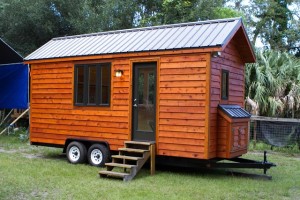
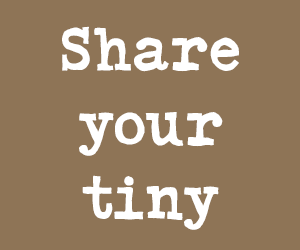
Beautiful home. Really nicely done and lovey decorations. Love the kitchen and the plant shelf overhead. The wood ceilings and accents are wonderful.